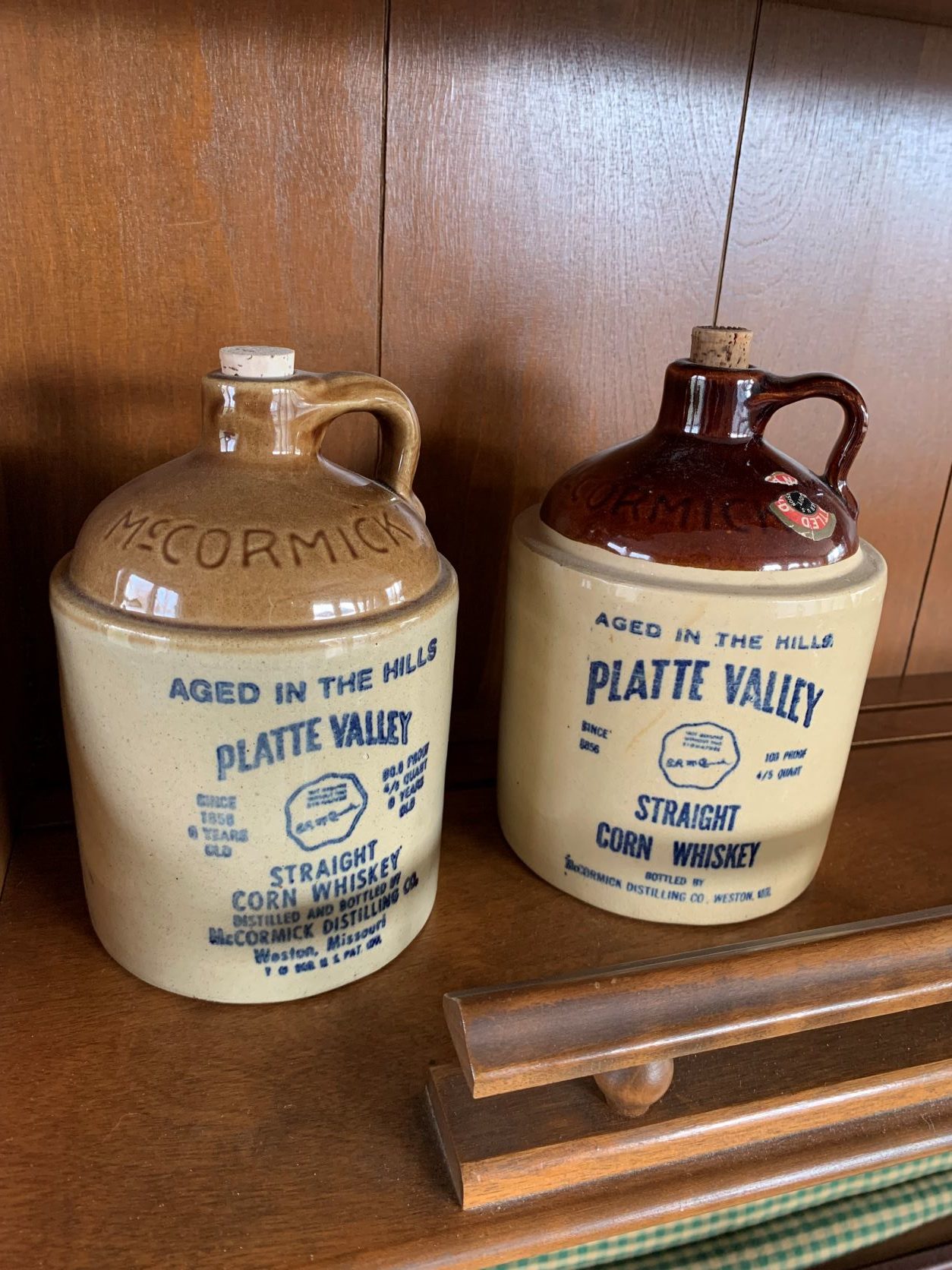Genealogy is the story of families, but sometimes a family story is attached to a family thing, and alas, a lot of the time the story (to put it diplomatically) is not supported by the material facts of the object itself. In such cases, antiques appraisers and material culture researchers must edit, correct, or revise what amounts to a family legend, which can be very awkward and at times downright blasphemous. It takes a sensitive (yet fearless) appraisal professional to emend generations of family lore, yet when she does, she may leave that family the richer for it.
Take the case of one of my own family’s legends told (sort of) through a brown jug.
For all my life I had heard the story of my mother’s wealthy and important cousins, the McCormicks of McCormick Whiskey fame and fortune. The McCormick Distilling Company, “the oldest distillery west of the Mississippi River still operating in its original location,” is very much alive today and producing spirits in historic Weston, Missouri. But by researching the collectible decanters and little brown jugs produced by McCormick from 1968-1987, I learned that any family connection to that enterprise is a good deal less direct than I had been led to believe.
In 1856, the colorful stagecoach mogul Ben Holladay and his brother David opened a distillery in Weston. After Holladay’s death in 1887, the business passed to David and then to his son-in-law, and the operation changed hands at least once again around the turn of the century and eventually landed with another pair of brothers, named Singer, soon after the repeal of Prohibition in 1933.
Hmmm. Nary a McCormick anywhere in this story so far. Do I have the right historic distillery in Platte County, Missouri? Well, as it turns out, there was more than one distillery in the area and one was indeed owned by a McCormick. Now we are getting somewhere. Sort of.
My mother’s grandfather, Richard Wiley Stallard, had two sisters, Mary and Elizabeth, who married brothers, J.T. and Arthur McCormick. Platte County, in the northwest horn of Missouri, was populated in the middle of the 19th century by waves of migrants from Virginia and Kentucky, and both the Stallards and the McCormicks hailed from Culpeper County, Virginia, in particular. The distinctly Southern character of Platte County (part of Missouri’s “Little Dixie” region) was evident not only in the people’s politics, culture, and customs but in the county’s early industry and commerce as well, of which hemp, tobacco, and whiskey figured prominently.
In 1888, J.T. McCormick entered the lucrative liquor market with his McCormick Mercantile and Distillery Co. located in Waldron, Missouri, 18 miles south of Weston, where the Holladay outfit was already well established. J.T.’s two sons, E.R. and W.T., took over the family distillery in 1909. These men were my mother’s dad’s first cousins, making them her first cousins once removed, in that her great-grandfather, Randolph Stallard, was E.R.’s grandpa.
Of course, Prohibition reduced all distillery operations in Platte County to a trickle for almost 14 years, from January 1920 to December 1933, during which time my mother was born in 1921. However, by the time Prohibition was lifted (right in the thick of the Depression, no less), E.R.’s wife had reportedly “got religion” and refused to “allow” her husband to reopen the distillery, so in 1939 (or maybe it was 1942) the McCormick Distillery Co. was sold to the Singer brothers, who for all intents and purposes merely acquired the McCormick brand, since the operation itself had never restarted after Repeal. The name remains the distiller’s trademark to this day.
In 1965, under yet more new owners, the company trademarked the facsimile “signature” of E.R. McCormick, but by then that historical person was more like the fictional Betty Crocker, really nothing more than a marketing figure.
Huh.
So unfortunately, my family connection with today’s McCormick Distilling is very, very thin indeed. In fact, the McCormicks were essentially out of the distillery business before my mother was even born. All that remains of the family story is in the name on moderately priced spirits and hundreds of little brown jugs of Platte Valley straight corn whiskey (usually empty) for sale on Ebay.
There are lessons in this example for both the genealogist and the appraiser. First, family stories of objects should never be assumed to be accurate. Trust but verify. Second, using a family story to interrogate a tangible object (or vice versa) is a fruitful research technique because the material culture of a family may hold solid evidence about who, where, and when, especially when oral tradition and family trees are murky or muddled. And finally, for the appraiser, breaking the news to a client that findings of material culture research refute family history is really hard and calls for a compassionate understanding of what both stories and things contribute to a family’s identity.
References:
https://www.fohbc.org/PDF_Files/Sullivan_Holladay.pdf
http://genealogytrails.com/mo/platte/bios_m.htm

